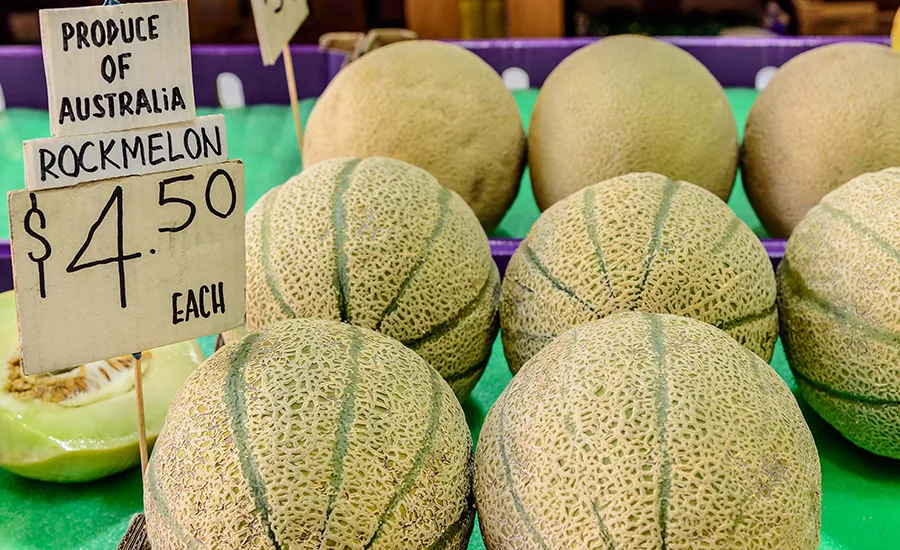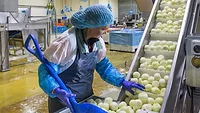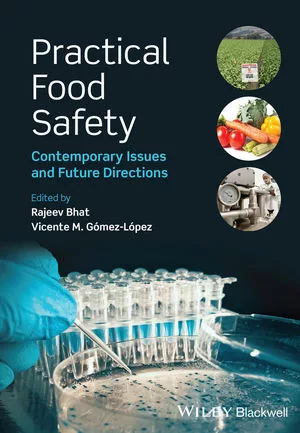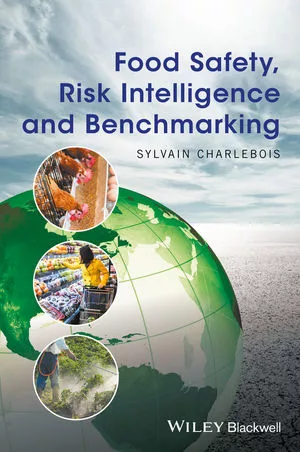Making Risk Assessments Practical: Spotting and Preventing Food Safety Hazards
Risk assessments are sometimes reduced to paperwork exercises, missing the opportunity to prevent food safety failures

Image credit: Adam Calaitzis/iStock/Getty Images Plus via Getty Images
Risk assessments are fundamental to food safety, yet their implementation across the food supply chain often falls short of meaningful application. While many training materials focus on explaining risk matrices and probability scoring, these concepts fail to connect with frontline leaders and employees in ways that drive better food safety practices. Too often, risk assessments are reduced to paperwork exercises, missing the opportunity to prevent food safety failures.
Spotting Risks in Food Safety
In the Food Safety Magazine article, "Building a Skilled and Capable Workforce for the Food Industry: Simplifying Food Safety Language,"1 the authors discussed how phrases like "identify food safety hazards" dominate training programs and resources. The article questioned whether this type of language promotes true understanding and effective implementation among all food handlers and leaders.
A risk assessment is a systematic process used to identify, analyze, and address potential hazards that could compromise safety. It considers how likely a hazard is to occur and the severity of its consequences, leading to control measures that reduce risks to a safe level. These assessments should be dynamic, practical, action-oriented, and designed to foster true competence.
In our respective fields, the authors have observed that risk assessments are predominantly developed in isolation, without engaging the people responsible for food safety. This results in a disconnect between theoretical risk management and on-the-job risk management.
The Problem with Traditional Risk Assessments
One of the biggest challenges in food safety risk assessment is that these assessments are often treated as compliance documents, rather than practical tools. Training programs and supporting resources focus on explaining the principles of risk assessments without showing their relevance to daily operations.
A chef in a busy kitchen, a production line worker, or a warehouse manager handling raw ingredients rarely stops to consult a risk matrix. Instead, they rely on prior experience and intuition in making decisions. When risk assessments are presented as abstract concepts rather than practical tools, they fail to engage those who need them most.
When and How to Perform a Risk Assessment
The following questions will help guide readers in deciding when to perform a risk assessment and determining it should be carried out.
Looking for quick answers on food safety topics?
Try Ask FSM, our new smart AI search tool.
Ask FSM →
When should a risk assessment be performed? Risk assessments should be conducted at key points in food operations, including:
- Before introducing new processes or equipment, to ensure that risks are identified upfront
- When changes occur in ingredients, suppliers, or production methods, to reassess hazards
- Following a food safety incident or near-miss, to prevent recurrence
- During routine food safety audits and inspections, to verify ongoing compliance
- Periodically, even without obvious changes, to proactively identify emerging risks.
How many people should be involved? A risk assessment should involve a cross-functional team. Key participants include:
- Frontline employees who handle food daily
- Supervisors or managers, to ensure that implementation aligns with company policies and safety protocols
- Quality assurance (QA) or food safety officers, for technical expertise
- Maintenance and cleaning teams who oversee facility hygiene and equipment safety.
What skills are needed? An effective risk assessment team should have:
- Observation skills, to identify potential hazards on the job
- Critical thinking and problem-solving skills, to analyze risks and determine control measures
- Decision-making abilities, to prioritize corrective actions
- Communication skills, to ensure clear reporting and accountability
A Hands-On Approach: Making Risk Assessments Work
To make meaningful connections between compliance and effective risk management, food businesses need a more hands-on, practical approach that integrates risk assessment into daily work. Here's how:
-
Move beyond paperwork.
Instead of treating risk assessments as checklists, leaders should build them into everyday routines and view them as tools that help food handlers/production workers do their jobs safely. Risk assessment should not be treated as just forms to be filled out. -
Train employees to spot and prevent hazards.
Training should involve hands-on activities where workers actively spot risks in their work environments. Instead of holding training sessions on cross-contamination risks, trainers should have employees walk through their work areas, identify potential hazards, and suggest practical solutions. -
Use case studies.
Rather than focusing on theoretical probability scores, food businesses should highlight actual case studies of food safety failures and successes. These examples make risk assessment relatable and demonstrate its importance.
Case Studies: Failures in Spotting and Preventing Risks
Three case studies illustrating failures in risk prevention and assessment are discussed below. They include a botulism outbreak in France linked to tinned sardines (September 2023), a Listeria monocytogenes outbreak in the U.S. associated with deli meats and cheeses (2022), and an L. monocytogenes outbreak in Australia linked to rockmelons (2018). All three incidents highlight critical gaps in food safety management and demonstrate the importance of proactive risk reduction strategies.
NetCost Market Listeria Outbreak
The U.S. outbreak was linked to contaminated deli meats and cheeses sold across multiple states, including Maryland, New York, Illinois, Massachusetts, New Jersey, and California. The Centers for Disease Control and Prevention (CDC) reported 16 confirmed cases, leading to 13 hospitalizations and one death.
Risk assessment failures and root causes included:
- Cross-contamination in retail delis. Regulatory investigations found that improper cleaning and sanitation of deli slicers at NetCost Market allowed Listeria monocytogenes to persist in retail environments.
- Lack of routine testing. Some NetCost market facilities failed to conduct regular environmental monitoring that could have detected contamination before it spread to consumers.
- Inadequate food safety training. Employees were not sufficiently trained to recognize contamination risks and implement preventive measures.
- Ineffective risk assessments. While risk assessments were in place, they were not effectively implemented. Weaknesses in communication and enforcement of risk reduction strategies at the operational level left critical gaps in food safety practices.
Regulatory actions in response to the outbreak encompassed:
- The U.S. Food and Drug Administration (FDA) and CDC issued warnings to consumers about the affected products and worked with NetCost Market to remove contaminated batches from the market.
- FDA increased inspections of deli processing facilities, enforcing stricter hygiene standards.
- New guidelines were issued to improve cleaning protocols for deli slicers and other high-risk food contact surfaces.
Rombola Family Farms Listeria Outbreak
In 2018, Australia experienced a devastating L. monocytogenes outbreak linked to rockmelons produced by Rombola Family Farms in New South Wales. The outbreak resulted in 22 confirmed cases of listeriosis and seven deaths, making it one of Australia's most severe foodborne illness incidents.2
Key issues identified in the outbreak included:
- Contaminated growing environment. Listeria was detected on the farm's equipment and in soil and water sources used for washing the rockmelons, indicating poor sanitation and inadequate water treatment.
- Post-harvest handling failures. The facility's post-harvest processing procedures failed to effectively remove Listeria contamination from the fruit's rough surface.
- Temperature control issues. Inconsistent cold chain management allowed Listeria to multiply, increasing the risk to consumers.
- Failure to act on previous warnings. Previous food safety warnings about Listeria risks in rockmelons were not sufficiently addressed, creating vulnerabilities in the production system.
Regulatory actions in response to the outbreak encompassed:
- Food Standards Australia New Zealand (FSANZ) and state health authorities issued recalls and consumer warnings.
- The New South Wales Food Authority implemented stricter compliance measures for the rockmelon industry, including mandatory environmental testing for Listeria.
- The FSANZ Food Standards Code was tightened, making it mandatory for rockmelon producers to have a food safety program.
- Increased oversight and revised guidelines for fresh produce farms were introduced to prevent future outbreaks.
Following the outbreak, significant upgrades were made to the packing shed to enhance food safety. Key improvements included:
- Enhanced washing and sanitizing. Chlorine levels in the pre-wash and sanitizer wash were increased to 200 ppm, ensuring over 2 minutes of contact time.
- Equipment modifications. The fungicide tank and drying fans were made easier to clean, and unsuitable packing table materials were replaced.
- Improved cleaning and hygiene. New, clearly labeled cleaning tools were introduced, hot water access for handwashing was restored, and cleaning protocols were updated.
- Risk reduction measures. High-pressure cleaning guns, which can spread Listeria, were restricted to prevent cross-contamination.
These measures, combined with strict monitoring, ensured that no Listeria was detected on fruit after operations resumed.
Tchin Tchin Wine Bar Botulism Outbreak
In September 2023, a severe botulism outbreak struck Bordeaux, France, linked to in-house tinned sardines served at the Tchin Tchin Wine Bar. The outbreak resulted in at least 15 cases of botulism, with 13 hospitalizations—including five patients on respiratory support for a prolonged period in the intensive care unit—and one fatality.
Risk assessment failures and root causes of the outbreak encompassed:
- Preservation techniques. The artisanal canning process failed to meet safe sterilization standards, allowing Clostridium botulinum to grow and proliferate.
- Insufficient oversight and training. The root cause of the outbreak was not only technical failure in the preservation process, but also a fundamental lack of competence and understanding on the part of the chef, highlighting the necessity of proper training and oversight in food safety practices.
- Noncompliance with safety standards. The methods used did not adhere to established science-based protocols designed to ensure safe canning and food preservation.
Regulatory actions in response ot the outbreak included:
- The restaurant owner was charged with involuntary homicide due to breaches of health and hygiene regulations.
- French authorities issued public health warnings and initiated a recall of the affected product.
- Inspections were intensified across similar establishments to ensure adherence to proper preservation standards.
Lessons Learned: From Compliance to Competence
All three outbreaks highlight how food safety failures are not just about risk identification, but also about ensuring that employees have the competence to effectively act on those risks. Key takeaways include:
- Hands-on training is essential. Employees need practical, scenario-based training in identifying and reducing contamination risks.
- Verification beyond paperwork. Cleaning protocols must be validated through microbiological testing and deep-cleaning audits.
- Empowering frontline workers. Encouraging workers to report issues and providing them with tools to reduce risks can prevent small oversights from becoming major outbreaks.
- Stronger environmental monitoring programs. Routine pathogen testing in processing (and retail) environments can help detect contamination before it affects consumers.
- Ensuring risk assessments lead to action. Risk assessments must go beyond documentation and lead to real, enforceable changes in daily operations.
These incidents highlight the need for a shift from a compliance mindset to one that prioritizes competence, proactive risk management, and continuous improvement in food safety practices.
Best Practice Example: Empowering Employees
A leading catering company took a different approach by embedding risk assessment into its daily routines. Instead of relying solely on static documentation, the caterer implemented a "hazard walk," where employees start each shift by spotting potential risks in their work area. This proactive method led to improved food safety practices and provides a good example of an improved approach to risk assessment.
The food industry has a history of taking shortcuts, which can lead to risk assessments becoming a meaningless compliance exercise. To ensure that these tools are used correctly, businesses need oversight and accountability. Steps for achieving this include:
- Embedding oversight into daily operations
- Supervisor walkthroughs: Managers should conduct daily or weekly hazard-spotting rounds with employees, reinforcing the application of risk assessments.
- Spot inspections: Random inspections help verify that risk assessments are being followed and not just "checked off" without action.
- Peer accountability: Employees should be encouraged to report risks in a safe environment that fosters a shared responsibility for food safety, rather than being seen as apportioning blame. Open communication and active employee engagement are essential. Digital feedback platforms can provide dedicated food safety suggestion platforms, while digital form and survey tools allow anonymous submissions. Offering rewards for valuable safety improvement suggestions can motivate staff to actively contribute to maintaining high safety standards.
- Digital tools for verification
- Automated monitoring: Tracking tools identify risks as they arise.
- Photo and video documentation: Digital checklists require workers to submit visual proof of completed safety checks.
- Task tracking and alerts: Automated systems ensure that corrective actions are completed and flag overdue tasks.
- Leadership and cultural shift
- Management buy-in: If leaders treat risk assessments as only checklists, then employees will follow suit. Leadership should treat risk assessment as an important and essential exercise.
- Continuous reinforcement: Regular training and hazard-spotting exercises should be embedded into daily operations.
- Performance reviews: Employees' ability to identify and reduce risks and learn from mistakes should be a key metric in evaluations.
- Independent verification
- External audits and third-party assessments: Regular, independent food safety audits can verify that risk assessments are being applied correctly and identify risks that may be overlooked due to over-familiarity.
Making Risk Assessments Meaningful
To transform risk assessment from a compliance exercise into a powerful food safety tool, we must rethink how they are explained and applied. Training should be hands-on, engaging, and focused on actual workplace scenarios. Risk assessment should not just be about calculating likelihood and severity; it must focus on helping employees spot and prevent risks in their daily tasks.
The food industry can no longer afford for risk assessments to be seen as meaningless paperwork. By making them practical and relevant, food businesses can create safer food environments, reduce contamination incidents, and protect public health.
References
- Thomson, A. and M. Wilson, "Building a Skilled and Capable Workforce for the Food Industry: Simplifying Food Safety Language." Food Safety Magazine. December 31, 2023. https://www.food-safety.com/articles/10001-building-a-skilled-and-capable-workforce-for-the-food-industry-simplifying-food-safety-language.
- New South Wales Food Authority. "Biosecurity and Food Safety: Listeria Outbreak Investigation Summary Report for the Melon Industry." October 2018. https://www.foodauthority.nsw.gov.au/sites/default/files/_Documents/foodsafetyandyou/listeria_outbreak_investigation.pdf.
Andrew Thomson is the Director of Think ST Solutions in Adelaide, Australia. With over 23 years of field experience, he has accumulated a wealth of expertise and formal qualifications. Andrew began his career as an Environmental Health Officer and Food Industry Teacher, and has since evolved into leadership roles within the foodservice industry. He holds qualifications as a teacher and lead auditor, among others. He has presented at conferences in Australia and New Zealand and contributed as an author to Food Safety Magazine. He is also a member of the Australian Institute of Training and Development.
Matthew Wilson, Ph.D. is a Senior Lecturer in the School of Agriculture, Food, and Wine at the University of Adelaide in Australia. He has a diverse research background in food quality and preservation, horticulture, new crop development, plant physiology, and sustainability. Dr. Wilson has over 10 years of experience exploring the intersection between the environmental conditions influencing primary production and the resulting influences on food chemistry and sensory perception. This has led to an acute understanding of the factors determining food quality, as measured by microbiological, instrumental, and human based means. As an education specialist, Dr. Wilson teaches into the Food and Nutrition Science program and is part of the Haide College teaching team. He teaches and assists with the development and delivery of several undergraduate and postgraduate courses.








